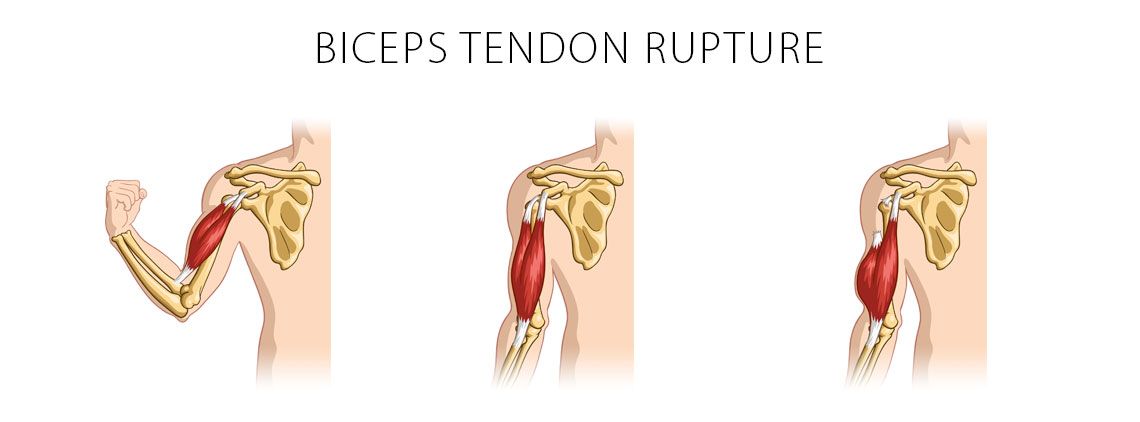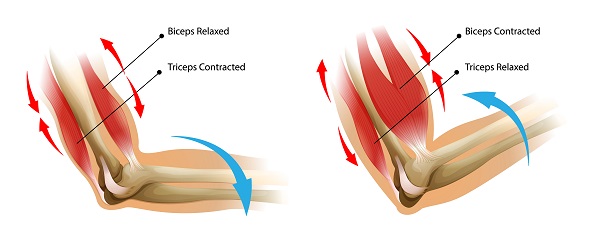| TENDON |
Tendon repair is surgery done to treat a torn or otherwise damaged tendon. Tendons are the soft, band-like tissues that connect muscles to bone. When the muscles contract, the tendons pull the bones and cause the joints to move.
| Trigger Finger |

The trigger finger syndrome causes one of your fingers to become permanently bent. There could be a snap when your finger bends or straightens, like when a trigger is pressed and released.
The condition known as trigger finger is also known as stenosing tenosynovitis (stuh-NO-sing ten-o-sin-o-VIE-tis).It develops when inflammation reduces the space within the sheath around the affected finger's tendon.If trigger finger is severe, the affected finger may become permanently bent. Those whose occupation or pastime requires repetitive gripping activities are more likely to acquire trigger finger. The illness is also more prevalent among women and diabetics. Treatment varies based on the degree of trigger finger.
Symptoms
| De Quervain Tendinitis |

The painful ailment known as De Quervain tenosynovitis affects the tendons on the thumb side of the wrist. If you have de Quervain tenosynovitis, turning your wrist, grasping anything, or making a fist will likely be painful.
Although the specific etiology of de Quervain tenosynovitis is unknown, any repeated hand or wrist action, such as gardening, playing golf or racket sports, or lifting a baby, can aggravate the condition.
Symptoms
1. The following are symptoms of de Quervain tenosynovitis:
2. Discomfort at the base of the thumb
3. An enlargement at the base of the thumb
4. When grabbing or pinching, it's difficult to move the thumb and wrist.
5. A "sticking" or "stop-and-go" sensation when moving the thumb.
If the condition is left untreated for too long, the pain may progress to the thumb, forearm, or both. Moving the thumb and wrist could exacerbate the pain.
| Lateral Epicondylitis (Tennis Elbow) |

Even though it's called "tennis elbow," it's not just a problem for tennis players. Professions such as plumbing, painting, carpentry, and butchery expose workers to the risk of developing tennis elbow.
Tennis elbow discomfort is felt mostly at the bony prominence on the outside of the elbow where the tendons of the forearm muscles attach. The forearm and wrist can also be affected by the pain.
Tennis elbow is generally alleviated by rest and over-the-counter pain medications.
Your doctor may recommend surgery if non-invasive treatments have failed or if you're unable to work because of your condition.
Symptoms
Tennis elbow can cause discomfort to spread from the outside of the elbow into the forearm and wrist. Pain and fatigue may make it challenging to:
Handshake or grasp an object
Twist the doorknob
Carry a coffee mug
| Medial Epicondylitis (Golfer’s Elbow) |
.jpg)
Painful inflammation of the tendons that join your forearm muscles to the bony bump on the inside of your elbow is the hallmark of golfer's elbow. Your forearm and wrist may also experience discomfort.
Similar to tennis elbow, golfer's elbow occurs on the outside of the elbow. This is not exclusive to golfers. Tennis players and other individuals who constantly utilize their wrists or fingers can also acquire golfer's elbow.
The discomfort caused by golfer's elbow need not keep you off the course or away from your favorite pastimes. Rest and suitable treatment can help you regain your footing.
Symptoms
1. Golfer's elbow is distinguished by:
2. Tenderness and pain The pain is usually felt on the inside of your elbow, but it can also be felt on the inside of your forearm. Certain movements usually make the pain worse.
3. Stiffness. Your elbow may be stiff, and making a fist may be painful.
4. Weakness. You may experience hand and wrist weakness.
5. Tingling or numbness These sensations may spread to one or more fingers, most commonly the ring and little fingers.
6. Golfer's elbow pain can strike suddenly or gradually. Certain movements, such as swinging a golf club, may aggravate the pain.
| Flexor Tendon Injuries |
A cut to the palm side of the fingers, hand, wrist, or forearm is a common cause of flexor tendon injuries. A flexor tendon injury can also occur if a finger or thumb is yanked away from you while you are grasping something, such as the jersey of an opposing player in a sport. A tendon can be lacerated by an open wound, but it can be ruptured by a quick, powerful strain against the tendon.
Symptoms
1. These are the most prevalent indications of a flexor tendon injury:
2. A wound on the palm side of your hand, wrist, or forearm, such as a cut.
3. Inability of one or more finger joints to flex
4. Discomfort when attempting to bend the finger.
5. On the palm side of your hand, tenderness along your fingers.
6. Numbness of the fingertip
| Extensor Tendon Injuries |
On the back of the hands and fingers, the extensor tendons lie just beneath the skin, right on the bone. Due to their placement, even a tiny cut can potentially harm them. Finger jamming may cause these thin tendons to detach from their bone connection.
After sustaining this type of damage, it may be difficult to straighten one or more joints. Treatment is required to restore tendon function.
Symptoms
1. A cut on the back of the hand, wrist, or finger.
2. Inability to straighten the finger or thumb completely.
3. The finger or thumb that hangs down
4. When trying to straighten the finger or thumb, there is pain.
5. The surgeon will examine the tendon's integrity to determine if a repair is necessary. If the injury was caused by glass or if joint damage is suspected, X-rays may be obtained. Occasionally, ultrasonography or MR scans are required to provide further tendon information.
| Biceps Tendon Rupture |

In circumstances of severe or persistent overuse, a tendon may deteriorate and ultimately rupture. A tendon can also tear as a result of an injury, such as awkwardly moving or twisting the elbow or shoulder, or falling with the arm extended. Most frequently, the bicep tendon ruptures at the elbow when lifting a big object (for example, a couch or a refrigerator).
A biceps tendon rupture may occur at the shoulder or the elbow. A tear might be either complete or incomplete. A complete rip indicates that the tendon has detached from the bone.
Symptoms
Depending on the location of the tendon injury, the most noticeable symptom will be abrupt, acute pain in the upper arm or at the elbow. A tendon rupture may be audible or felt as a "pop" Additional indications that you may have ruptured a biceps tendon include:
1. Pain in the shoulder or elbow region.
2. A bruise that occurs near the elbow on the upper arm or forearm.
3. Lack of strength in the shoulder or elbow.
4. You have difficulty rotating your arm from "palm down" to "palm up."
5. A modification to the frontal contour of the bicep muscle in the upper arm ("Popeye muscle").
6. Although surgery may be required to repair a torn tendon, people with torn tendons can often continue to function normally. Symptoms can be alleviated with the same therapies used to treat tendinitis. Typically, tears at the elbow level necessitate surgical correction.
| Biceps Tendonitis |

The shoulder may experience throbbing, excruciating pain that radiates down the arm. Any throwing, lifting, or pulling motion may cause shoulder pain.
The diagnosis is determined through a physical examination, ultrasound, and perhaps a CT or MRI scan.Rest, ice, over-the-counter pain medications, and physical therapy are the initial treatments.
Additionally, topical anesthesia and/or corticosteroids may be injected into the biceps tendon sheath. In some situations, surgery may be required.
Your primary care physician will arrange your treatment with a physical therapist. This ailment is initially treated with inactivity, physical therapy, and over-the-counter pain medication.
Symptoms
The primary symptoms of biceps tendonitis are as follows.
1. Shoulder soreness is the most typical sign of biceps tendonitis. Typically, the discomfort is felt in the front of the shoulder and may radiate down the arm. Occasionally, the pain begins abruptly after an inciting event, but more frequently, it builds gradually without a clear cause. Typically, lifting, pulling, or repetitive overhead actions will aggravate the pain.
2. An audible "click" in the shoulder upon raising the arm: It may be uncomfortable to move the arm up and down, and the pain may worsen at night. As you raise and lower your arm, you may experience shoulder catching or popping.
3. When pressing on the front of the shoulder, the biceps tendon is typically felt as a rigid band in the front of the upper arm near the shoulder, just above the bicep muscle. This band may produce pain in individuals affected by biceps tendonitis.